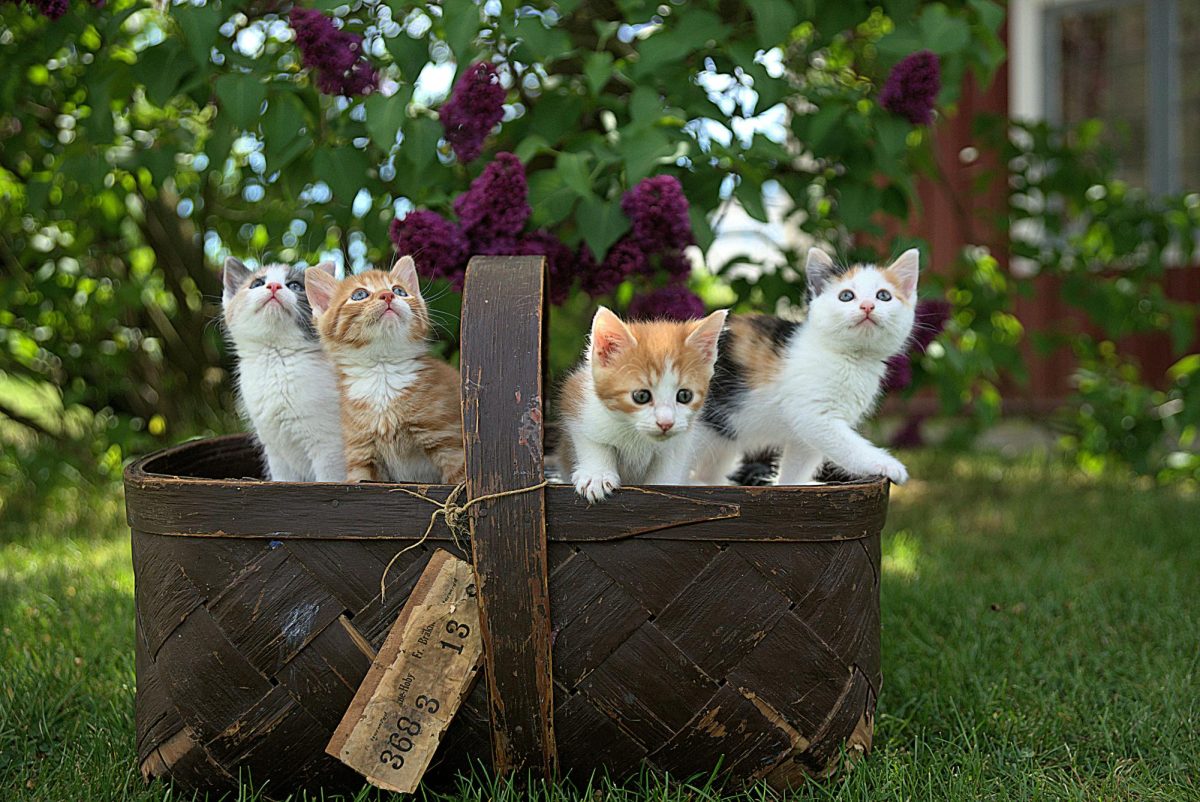October is a month full of superstition and fear, but one such day is important in understanding our feline friends. In the United States, National Cat Day occurs on October 29, not only promoting feline adoption, but the effects that superstition has on cats.
Cats were once revered for killing pests that damaged crops or carried diseases. Now, cats are invasive environmental predators who learned to survive great historical feats to exterminate their population as a whole.
Cats have been worshiped by some of the world’s earliest civilizations. Ancient Egypt viewed cats as symbols of divinity. In Greek mythology, cats were associated with the goddess of magic, Hecate, which partly influenced later superstition.
It wasn’t until the 13th century that early Christians began to view cats as the incarnation of Satan. Cats, due to their association with magic and witchcraft, were feared by early Christians in medieval Europe.
Historians are unsure why the distinction between black cats and other coat colors occurred. It is often believed that black cats were more practical for witches, due to their dark coats giving them a hunting advantage in the dark. This influenced the belief that black cats curse bad luck on whoever crosses their path.
This is merely superstition.
Unfortunately, cats have been killed due to their association with evil. Mass exterminations of cats occurred during medieval times. This backfired as the Bubonic Plague began to spread from rodents, which a healthy cat population would’ve maintained. These practices of ritualistic cat killings continued throughout history, and in some places still happen today.
Today, outdoor and feral cats are often killed not because of witchcraft suspicions, but because they pose a big threat to the environment. According to the American Bird Conservancy, free-roaming cats kill nearly 2.4 billion birds every year in the United States alone. Yet, due to their independence, cats are often left to fend for themselves.
Shelters try to cut down on the ever-increasing feral cat population by performing “Trap, Neuter (or Spay) and Release” programs on local feline populations. Outdoor and feral cats are captured, neutered, and vaccinated, then released back into the community. This process is used to prevent feral cats from being removed or killed by animal control. It is necessary that pets, especially indoor-outdoor cats, are properly neutered and vaccinated.
Pet owners can contribute to the killing of cats when they leave their animals unsupervised and unneutered. Unneutered pets are aggressive, territorial and more likely to escape and get into fights. Unneutered cats have the desire to reproduce, contributing to the rise in the feral cat population. Unneutered cats will regularly spray, a practice where a cat urinates to mark territory or attract nearby cats.
If you already own or are planning to own a pet, here are some things to keep in mind:
- Keep your pets inside. Pets can be outside with careful supervision, such as on leashes.
- Neuter your pets. Otherwise, you will have to deal with a pregnancy and a deadbeat dad cat. If you don’t want to neuter your animal, good luck with those urine stains on your couch. Enjoy the complaints you will get from visitors about the smell.
- If you cannot afford to have a pet, do not get one. Not everyone has the time or money to care for an animal. One pet is not “easier” than another.
- If you cannot afford to neuter your pet, local humane societies are happy to perform the surgeries and vaccinations at a discounted price.
This is to ensure cats are no longer killed as a result of poor pet ownership.
The following are sources in the Berks County area offer affordable spay and neuter services for cats. Many of these clinics will also supply vaccines, microchips, deworming medication, and FeVL/ FIV testing. Remember that spaying will almost always be more expensive than neutering, as it is a longer and more complicated procedure.
- Berks County Animal Rescue League:
- The Berks County ARL performs many services including affordable Spay and neutering for kittens as young as 8 weeks. The Berks County ARL also provides a discount to these services if the cat is caught through the shelter’s Trap-Neuter-Release program.
- Spay price: $120
- Neuter price: $100
- Phone Number: (610)-373-8830 ext. 640
- Address:
- 58 Kennel Road
- The Berks County ARL performs many services including affordable Spay and neutering for kittens as young as 8 weeks. The Berks County ARL also provides a discount to these services if the cat is caught through the shelter’s Trap-Neuter-Release program.
Birdsboro, PA 19508
- No Nonsense Neutering
- No Nonsense Neutering is a series of clinics in Pennsylvania that perform same-day surgeries by appointment only. These clinics have cheaper spay and neuter services for cats when compared to the Berks County ARL. All animals sterilized through the clinics are tattooed as indication. NNN clinics perform spaying on pregnant cats and cats in heat.
- Spay price: $100
- Neuter price: $95
- Phone Number: (866)-820-2510
- Clinic address for Allentown, PA:
- 1044 N Quebec St, rear
- No Nonsense Neutering is a series of clinics in Pennsylvania that perform same-day surgeries by appointment only. These clinics have cheaper spay and neuter services for cats when compared to the Berks County ARL. All animals sterilized through the clinics are tattooed as indication. NNN clinics perform spaying on pregnant cats and cats in heat.
Allentown, PA 18109
- Clinic address for Plains, PA:
- 10 Gallagher Dr.
Plains, PA 18705
- Clinic address for Reading, PA:
- 1500 Frush Valley Rd.
Reading, PA 19605
- Nobody’s Cats Foundation:
- The Nobody’s Cats Foundation is a clinic specifically for free-roaming cats. Due to its nature as a clinic aiding in TNR, spay and neutering are offered at $40 per cat. Surgeries, vaccines, and ear tipping will be provided for this price. Services are appointment only and can be performed on cats as young as 3 months.
- Phone Number: (855)-867-4228
- Address:
- 3909 Hartzdale Dr.
Suite 905
Camp Hill, PA 17011































